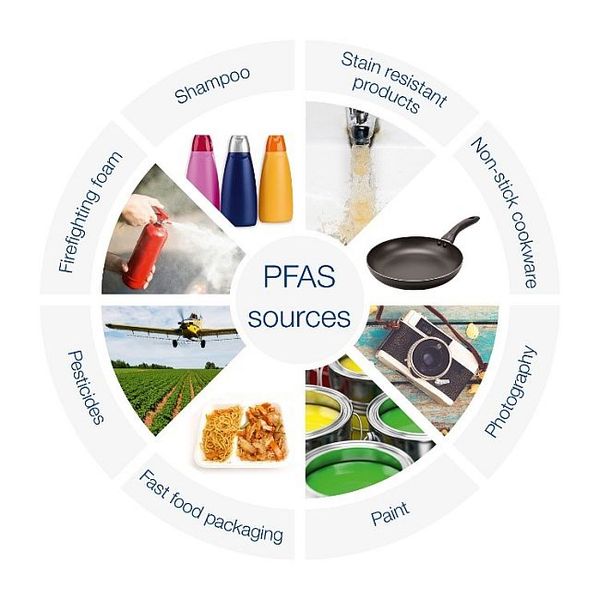How Reverse Osmosis is Tackling the PFAS Challenge in Drinking Water
With the surge in industrialization, ensuring the purity of our water sources has become urgent. Recently, A challenge increasingly highlighted in the United States is the presence of Per- and poly-fluoroalkyl substances (PFAS) in our drinking water.

How Reverse Osmosis is Tackling the PFAS Challenge in Drinking Water
Often termed "forever chemicals" because of their persistent nature and longevity in the environment, PFAS consists of a group of man-made compounds. Over the decades, they have seeped into various water sources. Given the potential health risks linked to prolonged PFAS consumption, it's crucial to find effective methods for their removal, such as Reverse Osmosis (RO).

What is Reverse Osmosis?
Reverse osmosis is a water treatment process that uses a semipermeable membrane to eliminate ions, molecules, and larger particles from drinking water. Applying pressure to the solution separates impurities from the permeate, ensuring our drinking water remains free of harmful contaminants.

RO - An Effective Barrier to PFAS
There are several advanced treatment methods proposed for PFAS removal. The most established options focus on sorption and separation, including granular activated carbon (GAC) adsorption, ion exchange (IX), and membrane technologies. The latter, encompassing nanofiltration (NF) and reverse osmosis (RO) processes, is the most efficient means to remove a wide range of PFAS.
Compared to GAC and IX, RO has proven exceptionally effective at removing long- and short-chain PFAS and other compounds. LG Water Solutions has innovated reverse osmosis by employing cutting-edge thin-film nanocomposite membrane technology, establishing a formidable barrier against PFAS in water sources. This has been demonstrated at multiple sites in the United States contaminated with PFAS.
Pilot Studies for PFAS Removal
Recently, several pilot studies using brackish water RO membranes with TFN technology from LG Water Solutions have been conducted to study the removal efficiency of PFAS by RO. The Brackish Groundwater National Desalination Research Facility (BGNDRF) in Alamogordo, NM, spotlighted the potential of RO membrane treatments to extract PFAS directly from well water, with a specific focus on perfluorooctanoic acid (PFOA) and perfluorooctane sulfonate (PFOS). Another study occurred at the Brunswick County Northwest Water Treatment Plant (NWTP), where the County evaluated constructing a low-pressure RO treatment system to purge contaminants like 1,4-dioxane, GenX, and other PFASs. Another trial was executed at the Bruce Hamler Water Plant in Rome, GA, aiming to treat surface water at an elevated recovery rate (up to 97%) using Flow Reversal RO.
At all these sites contaminated with PFAS, TFN RO membranes by LG Water Solutions effectively removed the target contaminants to meet the permeate water quality criteria. These pilots also demonstrate the effectiveness of LG NanoH2O RO membranes at removing PFAS in various feed water scenarios.
A fact sheet is available for download at the bottom of this page for more information about the pilot studies.
Brunswick County Northwest Water Treatment Plant


Bruce Hamler Water Treatment Facility
• PFBS (Perfluorobutanesulfonic acid), PFHxA (Perfluorohexanoic acid)
• Demonstrate steady removal of 25 PFAS compounds, including short-chain compounds, to non-detectable levels
• Achieve the highest possible recovery rate
• Determine critical design parameters for full-scale implementation


Looking Ahead
The PFAS challenge in drinking water is a compelling reminder of the necessity for continual innovation in water treatment and purification technologies. LG Water Solutions remains committed to refining and amplifying solutions like reverse osmosis, ensuring our water is safe and reliable for consumption.

